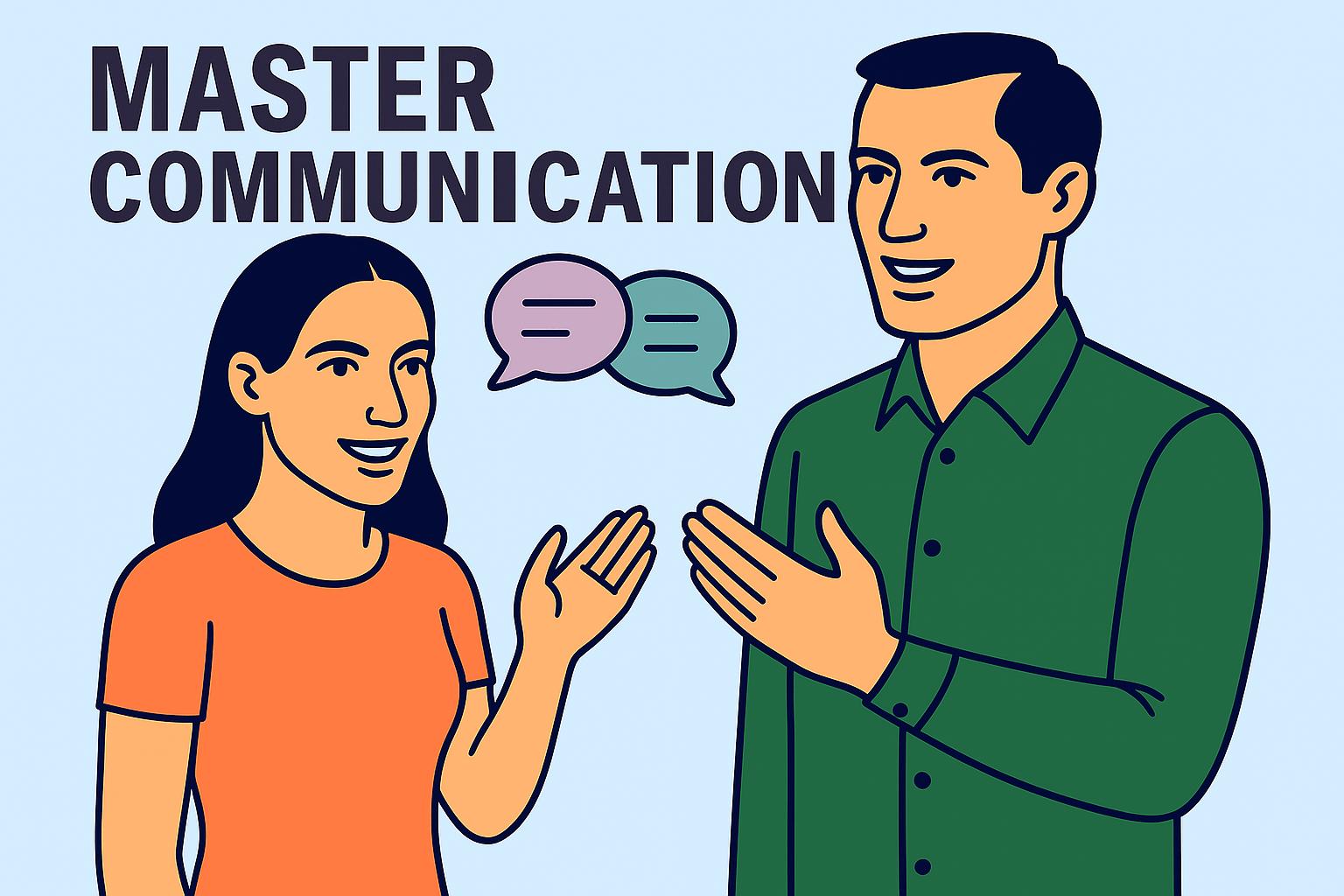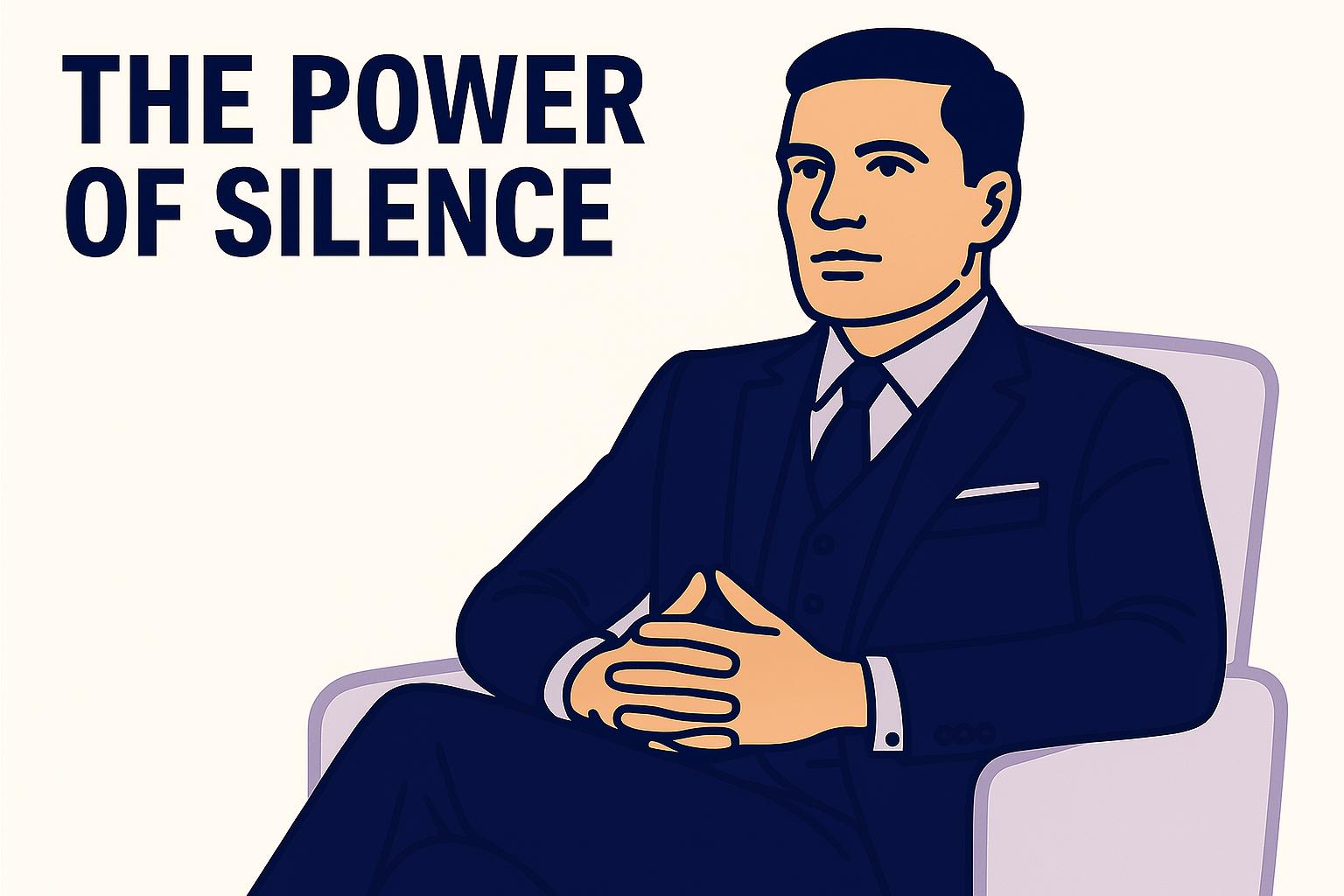Role of Body Language in Communication
Last updated on: July 28, 2025“The most important thing in communication is hearing what isn't said.” — Peter Drucker
In a world that praises words, non-verbal communication quietly carries the weight of most of our interactions. Every twitch, glance, or shift in posture is a message—often louder and more honest than speech itself. From FBI interrogation rooms to corporate boardrooms, the power of silent signals is undeniable. Yet many underestimate or overlook it.
This article explores the role of expressive behavior in communication through a deep lens—blending psychological science, cultural nuance, and practical insights from world-class books like What Every BODY Is Saying by Joe Navarro, The Definitive Book of Body Language by Allan & Barbara Pease, Presence by Amy Cuddy, and Emotions Revealed by Paul Ekman.
The Science: Why the Body Speaks Louder Than Words
In the 1970s, psychologist Albert Mehrabian broke down the elements of face-to-face communication:
- 7% words
- 38% tone of voice
- 55% physical cues
Though his study applied specifically to conveying emotions, its core message still resonates—non-verbal signals dominate when words and physical expression conflict.
From microexpressions controlled by the limbic brain (as noted by Joe Navarro) to gestures shaped by mirror neurons in the observer’s mind, physical expression works beneath conscious thought. It often reflects our truest feelings—whether realized or not.
The Subtle Signals That Shape Perception
Each part of the body has its language. Together, they write the full script of interaction.
1. Facial Expressions: The Window to Emotion
Paul Ekman’s work revealed that seven universal emotions—happiness, sadness, fear, anger, surprise, disgust, and contempt—are expressed similarly across all cultures. These fleeting expressions, known as microexpressions, can betray real feelings even when someone tries to hide them.
2. Eye Contact: Connection or Confrontation
Eyes convey presence, confidence, trust—and sometimes intimidation. Sustained, soft eye contact signals attentiveness and confidence. Too much feels aggressive; too little seems evasive.
3. Posture: Confidence Worn on the Body
Amy Cuddy, in her book Presence, explores how “power posing” (e.g., standing tall with shoulders back) increases testosterone and decreases cortisol. Posture doesn’t just influence how others see someone—it affects how that person feels inside.
4. Gestures: Amplifiers of Intention
Matching hand gestures with speech helps listeners remember key points. Open gestures with visible palms signal honesty; hidden or closed hands may raise subconscious suspicion.
5. Proximity and Space: Respect or Dominance
Edward Hall’s concept of proxemics highlights how physical distance between people affects communication. Standing too close can feel intrusive or dominant; too far might seem disinterested. Context is key.
A Story You Know, But Probably Missed
The Job Interview That Was Over Before It Began
Imagine a candidate walking into a job interview. Perfectly dressed, excellent resume, impressive qualifications. But his physical signals betrayed him: slouched shoulders, minimal eye contact, fidgeting hands. When asked about challenges, he looked down and crossed his arms. He said he could handle pressure—but his posture and movements told a different story.
The hiring manager faced a dilemma. The words said “confidence.” The body said “I’m not ready.”
Guess which one was believed?
This isn’t just hypothetical. Joe Navarro explains how FBI agents detect deception not by listening, but by reading involuntary, limbic-driven reactions. Employers and everyday people do the same, even if subconsciously.
How Non-Verbal Cues Influence Every Area of Life
1. Personal Relationships
- Nodding, mirroring, and leaning in signal warmth and attentiveness.
- Avoiding eye contact or closed-off posture creates emotional distance.
- Understanding silent cues strengthens emotional intimacy.
2. Professional Communication
- A confident handshake, upright stance, and relaxed gestures convey leadership.
- Sales professionals mirror clients’ posture and gestures to build trust—a strategy supported by behavioral science.
3. Public Speaking
- Effective speakers don’t just talk—they move intentionally.
- Think of MLK Jr. or top TED speakers. Their physical presence enhances their words and connection with the audience.
Cultural Nuances: One Gesture, Different Meaning
Allan and Barbara Pease emphasize cultural context in The Definitive Book of Body Language:
- A thumbs-up is positive in the West, but offensive in parts of the Middle East.
- Eye contact is respectful in Western cultures, but may be disrespectful in some Asian societies.
- Personal space varies globally: Americans prefer 2 feet, while Latin cultures are more comfortable up close.
Without cultural awareness, non-verbal behavior can misfire badly.
How to Improve Your Physical Expression
Improving non-verbal communication isn’t about faking confidence—it’s about aligning physical cues with genuine intention.
- Practice Self-Awareness: Notice posture, gestures, and expressions, especially under stress.
- Record Yourself: Analyze your tone, movements, and delivery to identify mismatches.
- Study Others: Observe confident speakers, leaders, and presenters.
- Mirror Subtly: Match the other person’s energy, posture, and pace to build subconscious rapport.
- Work from the Inside Out: Amy Cuddy’s research shows that “acting” powerful can make you feel powerful.
Key Takeaways
- The body speaks before the mouth opens. First impressions often form based on non-verbal cues.
- Words can lie—silent signals usually don’t. Especially in emotional or high-stress moments.
- Eye contact builds trust. Balance is key.
- Powerful posture changes perception and emotion.
- Non-verbal signals often outweigh verbal ones in important interactions.
- Cultural context shapes meaning. One gesture may mean different things in different places.
- Confidence is mirrored in the body. For credibility, your posture and tone must match your message.
Final Thoughts
In a world full of noise, mastering non-verbal communication is like learning a secret dialect—a more honest way to express emotion, truth, and intent. Whether strengthening relationships, leading teams, or managing conflict, physical cues give an edge that words alone can’t.
It’s not performance—it’s alignment. When body and words unite, communication becomes magnetic and real.
Let the body speak what the voice sometimes cannot.
Because people may forget the words—but they always remember how someone made them feel.
Frequently Asked Questions
a) Can body language be trusted more than spoken words?
In emotionally charged situations, yes. According to experts like Joe Navarro, when verbal and non-verbal cues conflict, people tend to believe the body—because most non-verbal signals are involuntary.
b) How long does it take to improve body language?
Noticeable improvements can begin within weeks with consistent self-awareness and practice. Developing natural, confident body language is a long-term process that requires reflection and real-world application.
c) Can introverts develop strong body language?
Absolutely. Body language isn’t about extroversion, it’s about alignment and presence. Introverts can use calm, intentional movements, warm eye contact, and posture to convey strength and sincerity.
d) Is it possible to overuse body language?
Yes. Excessive gestures, constant shifting, or exaggerated expressions can distract or seem insincere. Balance and context are key.
e) How can body language help in conflict resolution?
Open posture, calm tone, and relaxed gestures reduce tension and invite collaboration. Empathetic body language, like nodding and soft eye contact, fosters emotional safety and mutual understanding.


